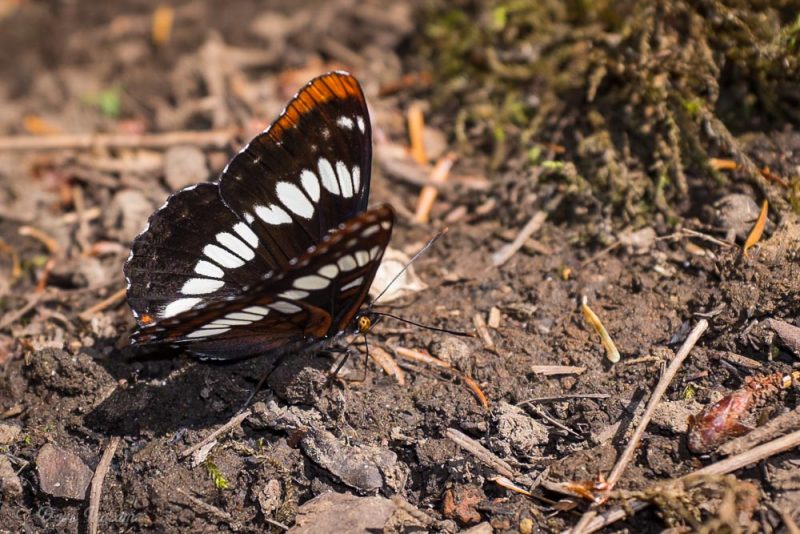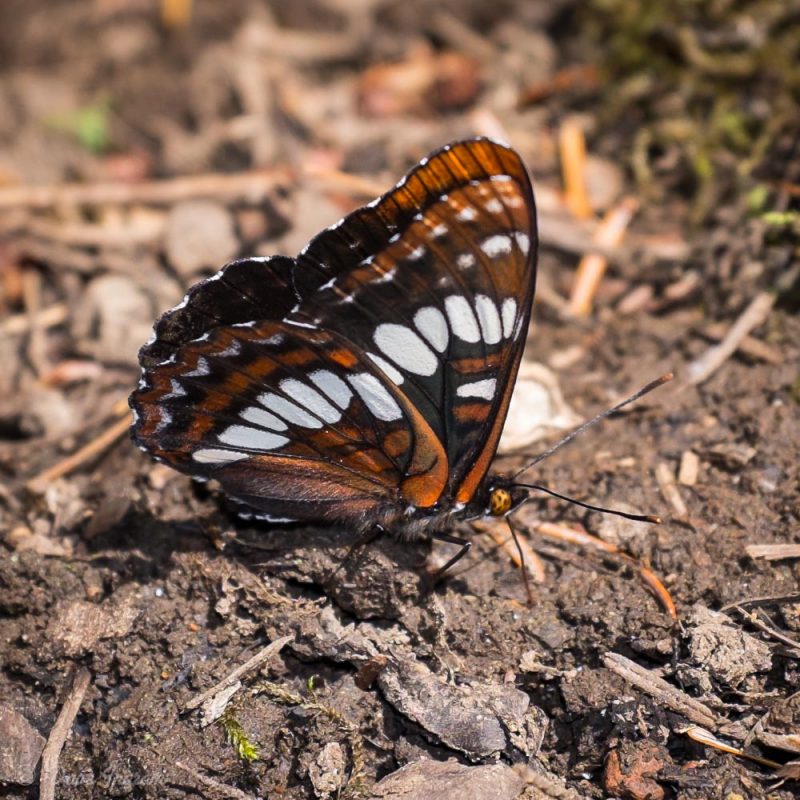Out for a family walk at Morrison Creek Park yesterday and we came upon a number of butterflies puddling on the wet mud beside one of the creeks. There were several Lorquin’s Admirals (Limentis lorquini ssp. ilgae) busy in the mud and I was able to get relatively close to one with my new Fuji X100S.

I’ve been seeing Lorquin’s Admirals everywhere lately, but it was really good to get a closer look. They’re gorgeous butterflies and the striking orange spots on the tips of the wings and white band of spots make them easy to identify.
There are typically two generations, one that over winters in a rolled up leaf hibernaculum, emerges tattered in the spring and lays eggs. I think that the ones in flight now are the second generation and the fact that they’re puddling is a good indication that they’re getting ready to reproduce.

As the water evaporates from mud, minerals and nutrients become more concentrated. Many species of butterflies converge on mud and “puddle,” using their long proboscis to take up sodium and other elements. Typically it is the male butterfly that puddles and the nutrients are passed on to the female during mating as part of a package of sperm and nutrients called a spermatophore.
Look for Lorquin’s Admiral eggs and caterpillars on native food plants like black cottonwood, willow, and hardhack as well as on domestic plants like cotoneaster and apple trees.
Once you’ve seen a couple of these distinctively patterned butterflies you’ll start to notice them everywhere. Wet muddy trails in open sunlight are a good places to find them!